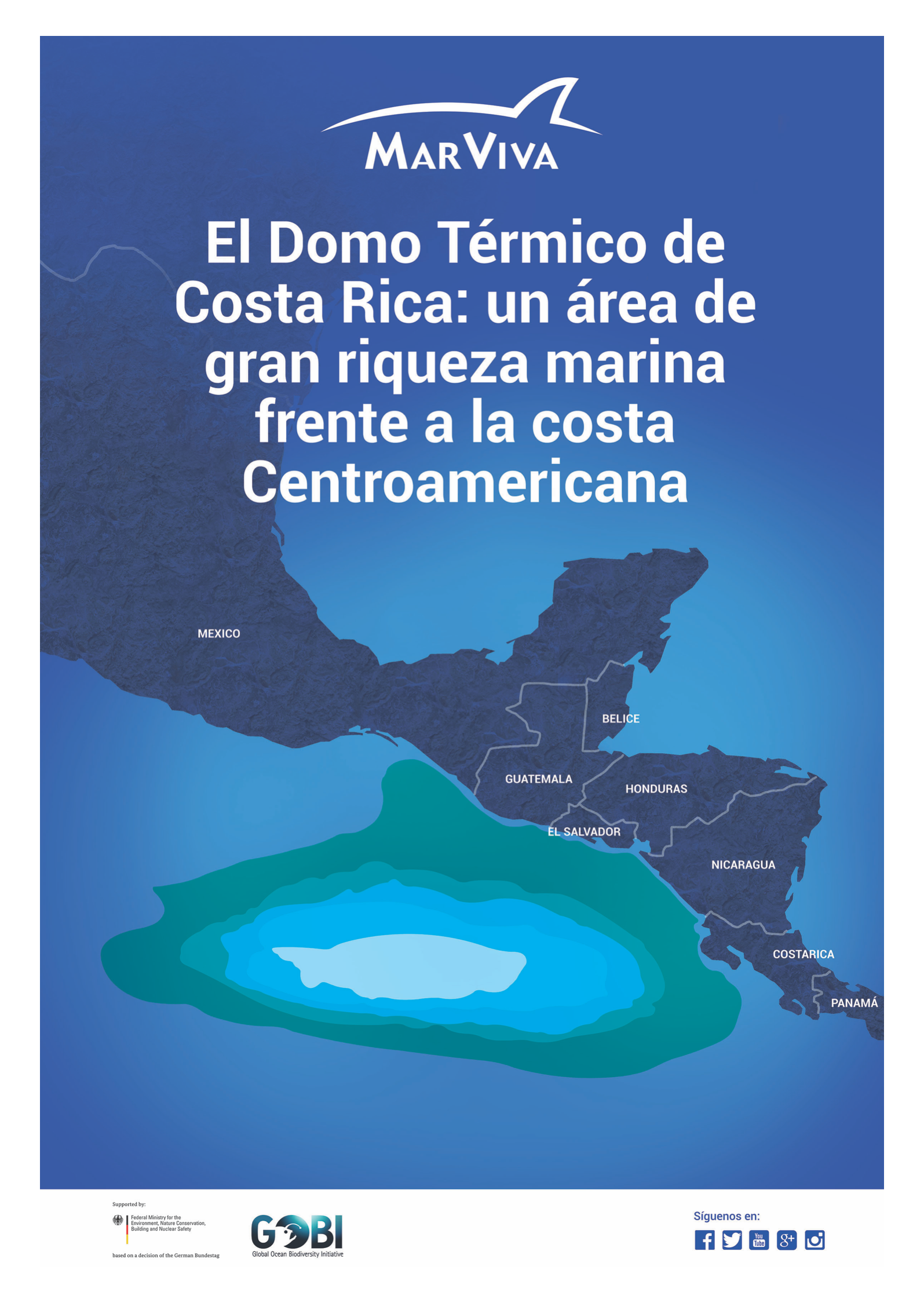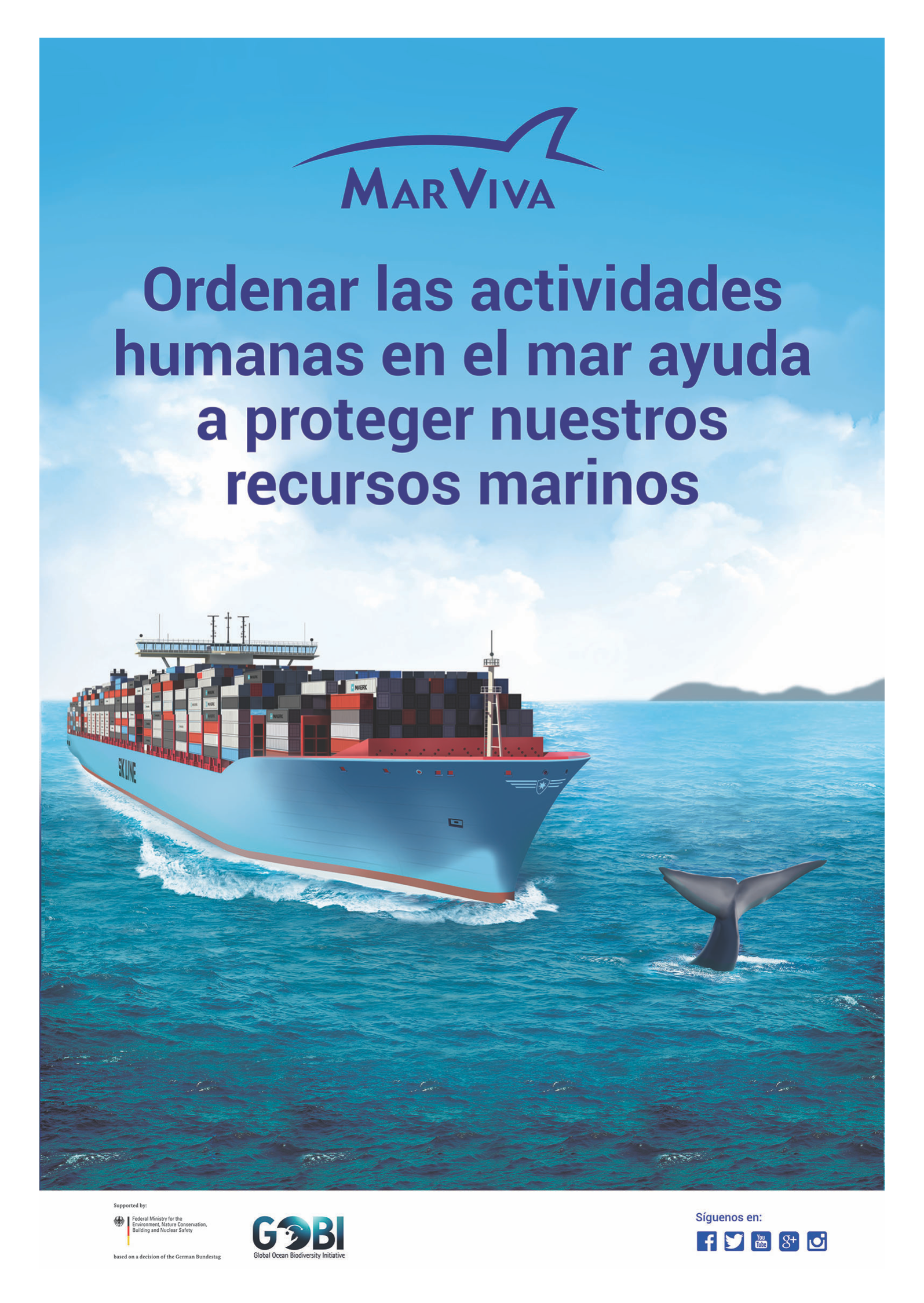Lead: Jorge Jiménez, Fundación MarViva

Background
In the tropical East Pacific Ocean, off the coast of Central America, there is a phenomenon that is persistent enough from year to year to be considered as an oceanographic feature – it is referred to as the Costa Rica Thermal Dome (or the Dome, for short). The feature, which can be up to 1,000 km in diameter, results from the interaction of swirling wind and ocean currents that cause the vertical conveyance of cold, nutrient-rich waters from the deep ocean towards the surface. As this body of cold water bulges dome-like up into the water column, the warmer water above it is displaced laterally, resulting in a thinner layer of warm water above the upwelling than in surrounding areas. Where nutrient-rich cold water meets warmer water close to the sunlit surface, planktonic algae thrive, sustaining a food chain of grazing zooplankton, filter-feeding forage fish, their predators such as tuna fish and diving birds, followed by sharks, dolphins, rays and whales. The whole feature is an oasis of productivity and a biodiversity hotspot that attracts animals from far and wide, with many migratory animals using it as a staging post during their long journeys across the ocean.
The Dome’s biological pulling power has not gone unnoticed by people in nearby countries of Central America. Consistent concentrations of usually well-dispersed animals so close to their shores has led to the establishment of several industries and activities that exploit such a seemingly dependable resource, including commercial and recreational fishing, and wildlife-based tourism. These industries are worth millions of dollars to the national economies and are prone to overexploitation. A less obvious threat to the ecological integrity of the Dome is the incessant marine traffic that traverses the feature following one of the busiest maritime trade routes in the world, form North Asia and America towards the Panama Canal, and vice versa. Collisions with whales and pollution events from ships are likely to be far more numerous than presently recorded.
Whilst the existence of the Dome has been known for some time, the realisation of its importance to both the ecosystem beyond its limits and to Central American society is only now starting to emerge. Relatively little is known about the full assemblage of species that utilise the CRTD, and whether any of those species depend directly on the feature for their continued survival. Even less is known about the fate of species should the feature’s persistence be compromised with the prospect of global climate change. The detrimental effects of human activities, both land-based and at sea, on the biodiversity and ecosystem services that are supported by the Dome are poorly understood, especially whether such effects are acute, chronic or reversible. This work aims to catalogue all available information on the physical and biological characteristics of the Dome, with the intention to fill the knowledge gaps identified. In parallel, it intends to publicise the ecological and economic importance of the Dome to Central American society, emphasising the trade-off in benefits between the two, and to devise a governance scheme that will rebalance that trade-off in favour of a sustainable future for both.
Objectives
- To describe the biodiversity, ecology and oceanography of the Dome by production of a dedicated Dome atlas and geodatabase.
- To develop and propose a marine governance scheme for the Dome, including its extent in the high seas.




Publicity campaign, San José, Costa Rica
Approach
The actions involved in this work are:
- Synthesis and publication of a spatial and temporal species distribution atlas for the Dome. Content to include visualisations of the feature’s oceanographic and ecological attributes, its value as a resource, and its biological and economic connectivity links to Central America.
- Implementation of an extensive public outreach and media campaign to raise awareness of the value and relevance of biodiversity sustained by the Dome, its linkages to human wellbeing, as well as the importance to conserve and manage marine areas beyond national jurisdiction.
- Supporting the generation of a multisectoral recommendation on a potential macro-zonation plan for the Dome via an international, high-level Marine Spatial Planning process, leading to the development of a potential governance model for the portion of the Dome that lies in international waters.
- Validate and promote the agreed recommendations and governance model amongst decision makers in Central America.
Results to date
Raising public awareness in Central America of the importance of the Dome to society and to the natural world has been achieved through targeted publicity campaigns, including large posters in urban settings.
Dedicated seagoing expeditions measuring oceanic variables, the tagging and tracking large ocean migrants, as well as the information gathered by an exhaustive review of the scientific literature, have culminated in the creation of an Atlas, accompanied by an interactive web-based geodatabase.
A series of thematic workshops has been convened, attended by government representatives from Guatemala, El Salvador, Honduras, Nicaragua, Panama, Dominican Republic, Costa Rica and intergovernmental regional organisations, to develop a regional governance scheme for the Dome, including areas beyond national jurisdictions. Local and international support for this approach is strong, following presentations of progress at high-level international meetings, such as the UN’s Third Inter-governmental Conference on BBNJ (August 2019) and the UN Climate Change Conference (December 2019). The scheme is now included in the Regional Coastal and Marine Agenda, with backing from the Council of Ministers of the Central American Commission of Environment and Development.
The following publications have emerged from this work:
- Preventing Plastics Pervading an Oceanic Oasis: Building the Case for the Costa Rica Thermal Dome to Become a World Heritage Site in ABNJ, by D Johnson and colleagues, in Marine Policy 2018, Vol. 96 (download).
- Towards the establishment of a governance model for the Costa Rica Thermal Dome, first edition [in Spanish], by M Blanco Bolaños & A Carballo Madrigal, Fundación MarViva publication (download).
- An Analysis of Policy Options Available to the International Maritime Organization to Protect the Costa Rica Thermal Dome: Building the Case for a Particularly Sensitive Sea Area, by Castillo Rodríguez et al. (2023) in Marine Policy (access here)
Application
Raised public awareness of the importance and value of biodiversity, both as an environmental and an economic resource, is fundamental for the sustained coexistence of human society and wildlife, especially as biodiversity is vital for the continued functioning and provision of ecosystem services which, for the most part, humans take for granted. Already, GOBI has contributed to the description of an EBSA (Upwelling system of Papagayo and adjacent areas) that recognises the wildlife corridor between Costa Rica’s coastline and the Dome. This work builds upon that recognition to reinforce the notion that biodiversity must be preserved, especially in areas beyond national jurisdiction where adequate protection and regulation are lacking. It has also formulated a political mechanism so that actions can be taken at both national and regional scales to implement the preservation of biodiversity associated with the Dome, and in doing all of this, contribute towards the fulfilment of GOBI’s objectives for the benefit of all.




